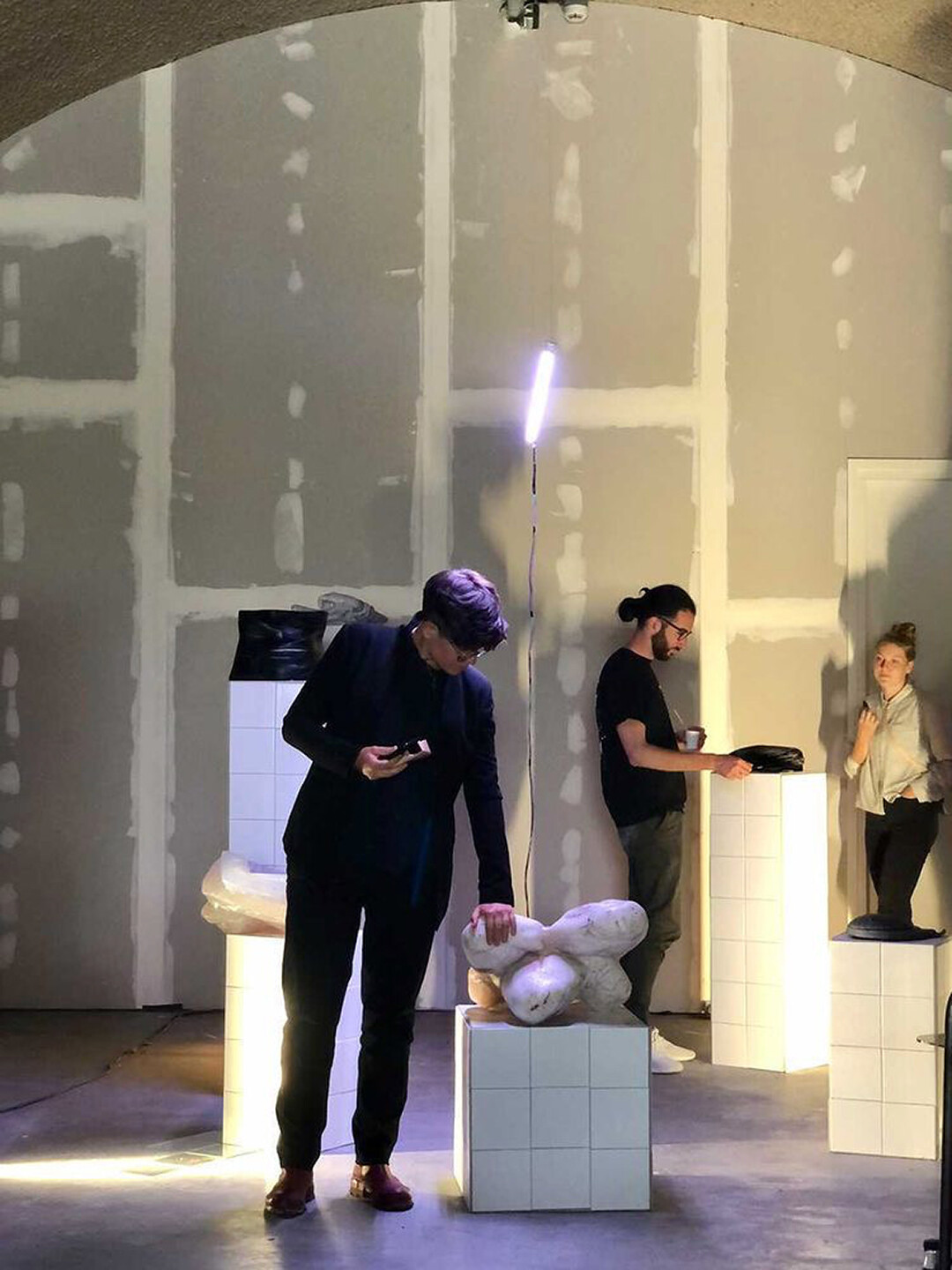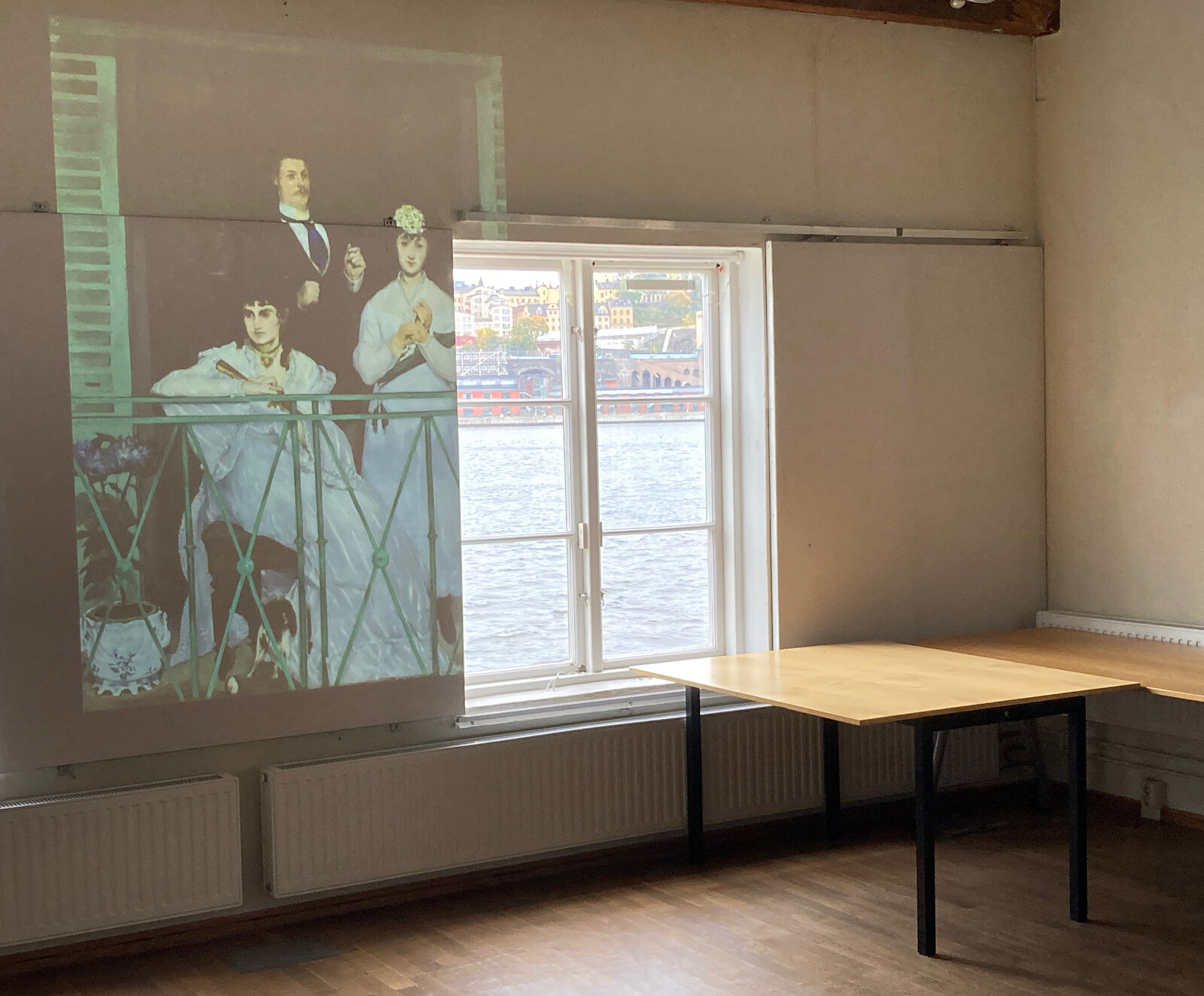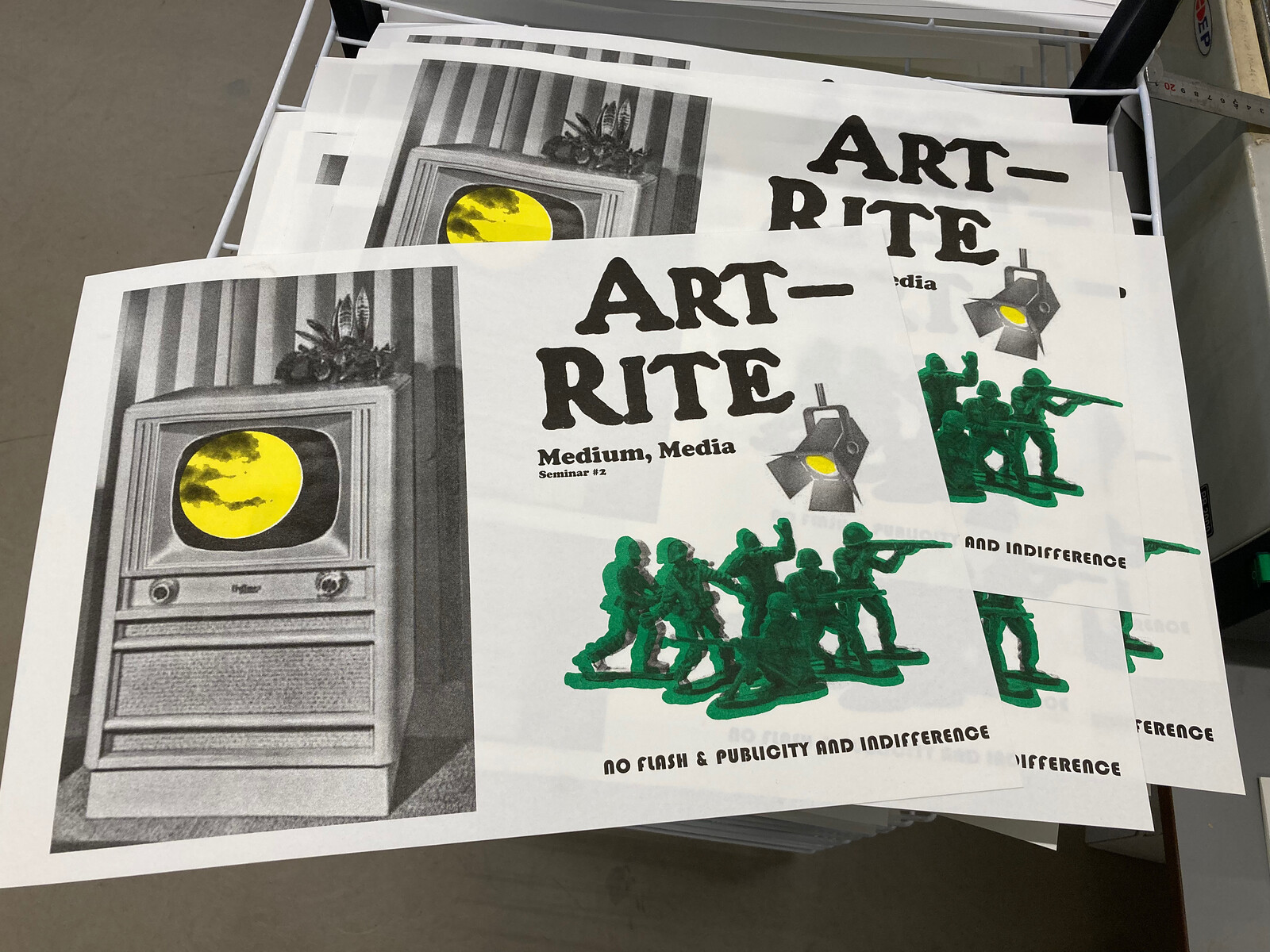1. Why did you decide to go into teaching?
When I started teaching art theory at the Cooper Union in New York, I was trying to manage the cognitive dissonance of being a graduate student at Columbia University and an independent curator. I needed a space to unlearn what I was learning as quickly as possible, and Cooper students were very good at forcing me to question my assumptions about knowledge. A year later, I took a position teaching curatorial practice at the New School for similar reasons: the classroom offered a place to think about what exhibitions could or should be that was more experimental and dynamic than the art world I had access to in New York at the time. These were not my first teaching experiences—they constitute the moment when teaching theory to artists and curators crystalized for me as a political practice.
2. What drew you to your school and what is your teaching philosophy?
The Royal Institute of Art in Stockholm is at the crossroads of competing definitions of art education. On one hand, it is still structured according to the old European model, which is centered on workshops and students from different levels of education working together under the direction of one professor. This model privileges the freedom to shape one’s education in a very broad sense. On the other hand, Royal Institute of Art is transitioning to a model of art education oriented more toward research and away from medium-specific training. I was drawn to the possibility of working with students who possess the confidence and the tolerance for ambiguity to choose the kind of openness offered by the older model yet are open to the idea of abandoning the autonomy of the art object and the solipsism that so often comes with that idea.
The question posed by this transition for someone responsible for art theory is: How can educating artists in theory contribute to a curriculum centered on aesthetic freedom and not simply enforce professionalizing academic standards for the use of language and history in the arts? The fact that this was still an open question at the Royal Institute of Art was irresistible to me, frankly.
3. What theory and art history do you consider most essential for your students? What artist or artwork do you refer to most often?
It is essential that my students read. It is essential that they feel safe enough to read complex things carefully and with vulnerability. And it is even more important that they develop the confidence to disagree with the authors of complex, genuinely argued texts. That is the sword I will fall on. Further, we who teach in art schools have a profound responsibility to equip all our students with an embodied understanding of critical race theory and intersectional feminism. They will not survive ethically or intellectually as artists if we fail in this respect.
I teach what I’m reading or what is relevant to the students I have this year. A partial version of that list right now: Lorraine O’Grady’s Writing in Space; Melody Jue’s Wild Blue Media; Eyal Weizman’s slim volume, The Roundabout Revolutions; Kara Walker destroying Andy Warhol in an edited volume of artists’ writing published by Dia Art Foundation; Nina Valerie Kolowratnik’s gorgeous argument about indigenous models of knowledge in The Language of Secret Proof; Thomas Keenan’s 2002 article on “the media” and the siege of Sarajevo, “Publicity and Indifference”; and Arkady Martine’s pair of queer science-fiction novels about empire, language, and fungi, A Memory Called Empire and A Desolation Called Peace.
4. How do you navigate generational or cultural differences between you and your students?
I insist on my students’ right to opacity because the fantasy of stable, knowable subjectivity seems dangerous to me. I was born on the Mediterranean, raised South of the Mason-Dixon line, educated in the very heart of Empire, and live and teach in the North, in Sweden, among an international faculty and student body. I have never felt culturally coherent, and I have always lived between languages and dialects of language. I expect that many of my students and colleagues also feel they are living in two or three worlds at once. None of us is what capitalism wants us to believe we are.


Llorens touching a work by Milena Sekulić during the Piet Zwart Institute Master in Interior Architecture, Design, and Research final examinations, Rotterdam. Photo: Ephraim Joris.
5. What changes would you like to see in art education?
I would like to see a sustained economic commitment to treating the homogeneity of art school as a political problem. Aesthetics are central to the challenges we face as a global society—it matters a great deal what is made visible and how it appears. And so it matters a great deal what kinds of experiences contribute to aesthetic production at a national art institute like the Royal Institute of Art. I would like to see resources directed at anti-racist and anti-classist initiatives within the school to support this commitment, including, for example, a night school or summer school specifically designed to prepare students who cannot afford the normal preparatory schools for application. I would like to see measures taken to encourage hiring staff of color and supporting them after they are hired on both the teaching and administrative sides of the school. This isn’t just the responsibility of “the school”: we all need to do it. A group of staff at the Royal Institute of Art have formed Calling Card, a working group in homage to Adrian Piper, dedicated to anti-racism at the institute at the structural level. But there is a lot of work still to do on this front.
6. What is your educational background? Did you arrive at art from another field?
I have an MA in curating from the Center for Curatorial Studies at Bard College and a PhD from Columbia University in modern and contemporary art history. My dissertation analyzed experimental film from Algeria in the 1960s and ’70s, and my unofficial doctoral exhibition was a large-scale survey of contemporary art by people working in Algeria and in its diaspora.
7. How have recent cultural movements and activism informed your curriculum?
I teach in Sweden and, because of the government-mandated, prohibitive fees for non-European citizens, my students are almost exclusively European citizens. “Recent” cultural movements and activism impact my students, but sometimes in oblique ways. The political conditions in Sweden are very different even from other countries in the EU, like France, much less Algeria, Beirut, Argentina, or the United States, where there have been massive popular movements in the last two or three years. By comparison, the Nordic region is still isolated from political radicalization processes happening elsewhere. I feel a responsibility to bring those struggles into the classroom because they are reshaping the discourse of art in significant ways, but I also know that any real shift in consciousness will have to come from students, from their desire to change the society they belong to. I think it is important to make as much space as possible for them to formulate their own imagination of that eventual revolution.
8. How much structure or independence do students have in your courses?
I believe that the space to imagine art’s radicalization depends on submission to a collective endeavor. Therefore, I am strict about the basics: you have to show up to my classes, you have to show up on time, and you have to show up prepared to engage. I think this kind of rigid external structure is essential to producing enough safety and consistency to getting anything done intellectually. I also abide by a Rancièrian line when it comes to the text: we are there to use the text as a common ground for discussion because it is the thing between us, it is that which allows us to escape our own self-absorption, if only for a moment, and therefore to encounter difference. I insist that we (myself included) are present and that we pay attention to that which is external to ourselves.
9. How does the program connect students to the surrounding art scene? How do they learn outside the classroom?
The Royal Institute of Art has well-equipped workshops and studios for all its BA and MA students, and my sense is that many students spend their time at the school taking advantage of these resources. Their connection to artist-run spaces in Stockholm and to the gallery scene exists, but the strength of our educational model is time and space to work in a focused manner. The structure of the school—professor groups working independently from one another—doesn’t rely on the classroom model. The courses in my area, the Text Area, are unique in our educational model in that respect. In a sense, most our education takes place outside the classroom. That said, I would love to see the institute connect more with and grow into an active alternative scene in Stockholm.
10. What advice do you give to your students as they leave school and enter the field?
Read or listen to audiobooks or podcasts or whatever. But make this encounter with a different texture of thought part of the studio routine somehow.
Also: no one gets anywhere alone. Take care of the people you came up with. Read each other’s applications, give each other crits, participate in each other’s development. You belong to a scene, if you’re lucky, maybe several overlapping ones. Nourish them.







